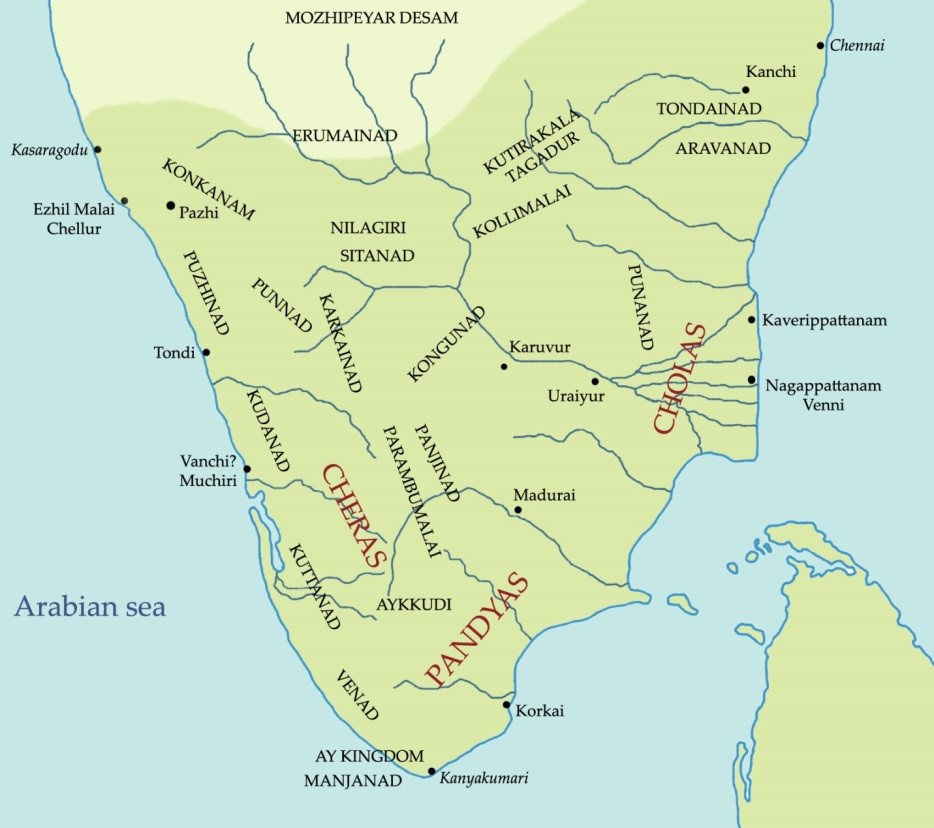SANGAM PERIOD
Hello Students,
Continuing on our series of Ancient India, In this Article you will find the complete notes on Sangam India. This will cover your syllabus of Ancient History of India for UPPSC PCS Exams.
All the Best!!
Sangam Age - The Dawn of History in the Deep South
The Megalithic Background
Megalith graves were encircled by big pieces of stones. They also contained pottery and iron objects buried with the corpse. They are found in the upland regions of Peninsula with the concentration in Eastern Andhra Pradesh and Tamil Nadu
State formation and the rise of civilization
The megalithic people started to reclaim the fertile deltaic lands. The route to the south is called as Dakshinapatha which became economically important.
Megasthenes knew about Pandyas while Ashokan inscriptions mention about Cholas, Pandyas, Keralaputras and Satyaputras
Flourishing trade with Roman empire led to the formation of these three states i.e., Cheras, Cholas and Pandyas
Sangam Period
Sangam period is the period in the history of ancient Tamil Nadu spanning from c. 3rd century BC to c. 3rd century AD. It is named after the famous Sangam academies of poets and scholars centred in the city of Madurai.

Three early kingdoms
Kingdom | Capital | Port | Emblem | Famous Ruler |
Cheras | Vanji – Modern Kerala | Muzuri and Tondi | Bow | Senguttuvan |
Cholas | Uraiyur and Puhar | Kaveripatinam/Puhar. They had an efficient Navy | Tiger | Karikalan |
Pandyas | Madurai | Korkai for Pearl Fishing | Fish | Nedunzheriyan |
Cheras
- They had Palmyra flowers as their Garland
- Pugalur inscriptions mention of three generations of Cheras
- Senguttuvan introduced Pattni cult or Worship of Kannagi as ideal wife
Cholas
- Karikalan built Kallanai (Check dam) against River Kaveri
Pandyas
- Maduraikkanji written by Mangudi Maruthanar describes the socio-economic conditions of the Pandyas
- Invasion by Kalbharas led to their decline
These kingdoms had a profitable trade with the Roman empire. They produced Pepper, Ivory, Pearls, Precious stones, Muslin, Silk, Cotton etc. which led to prosperity in their region.
Rise of social classes
- Enadi – captains of the army
- Vellalas – Rich peasants
- Arasar – ruling class
- Kadaisiyar – the lowest class
- Pariyars – agricultural labourers
Four castes mentioned in Tolkappiyam
- Arasar – Ruling class
- Anthanar – Brahmanas
- Vanigar – People involved in Trade and Commerce
- Vellalar – Labourers
Five-fold division of land
Land | Type of land | Chief deity | Chief occupation |
Kurunji | Hilly tracts | Murugan | Hunting and honey collection |
Mullai | Pastoral | Mayon | Cattle rearing and dealing with dairy products |
Marudham | Agricultural | Indira | Agricultural |
Neidhal | Coastal | Varunan | Fishing and salt manufacturing |
Palai | Desert | Korravai | Robbery |
Sangam administration
- Avai – the imperial court
- Kodimaram – tutelary tree of every ruler
- Panchmahasabha
- Amaichar – ministers
- Senatipathiar – Army chief
- Otrar – Spy
- Thoodar – Envoy
- Purohitar – Priest
- Kingdom’s division
1. Mandalam/Nadu – Province
2. Ur – town
3. Perur – Big village
4. Sitrur – Small village
Sangams
Sangam | Place | Chairman | Surviving texts |
1st | Then-Madurai | Agasthiyar | Nil |
2nd | Kapadapuram | Agasthiyar and Tolkappiyar | Tolkappiyam |
3rd | Madurai | Founder - Mudathirumaran Nakkirar | Ettutogai, Pattu Pattu (10 idylls) |
Tamil language and Sangam literature
- Narrative – Ettutogai and Pattupattu which are called Melkankakku – 18 Major works. They are divided into Agam (love) and Puram (Valour)
- Didactive – Pathinenkilkanakku – 18 minor works. They deal with Ethics and Morals.
- Thirukkural – Written by Thiruvalluvar is a treatise covering various aspects of life.
- Tolkappiyam by Tolkappiyar is the earliest of Tamil literature. It is a work on Tamil Grammar but also provides information on Political and Social conditions of Sangam period
Epics
- Silapadhikaram by Elango Adigal
- Manimegalai by Sitthalai Sathanar
- Valayapathi
- Kundalagesi
- Sivaga Sinthamani
Comments
Post a Comment